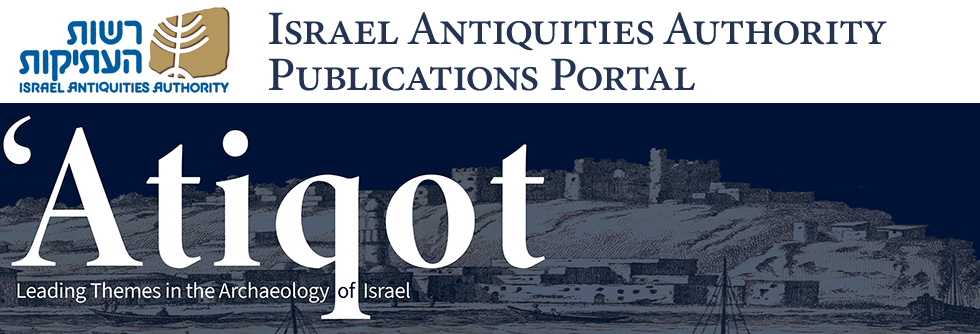Abstract
Three areas (A–C) were excavated and six archaeological strata were identified. Area A yielded sparse remains of the late Byzantine (Stratum I), Persian (Stratum II) and transitional Iron Age II/Persian (Stratum III) periods. Area B yielded the poorly preserved remains of a pottery kiln of the vertical or up-draft type, dated by pottery to the late Byzantine period. Area C yielded three strata (VI–VIII) with sparse remains dating from MB IIA. The pottery included local wares and imports from Cyprus, analogous to the finds from the Palace III phase at Afeq, between the end of MB IIA and the beginning of MB IIB. Earlier pottery finds date to the Chalcolithic period and the Intermediate Bronze Age. The lithic collection from the site is very small (N = 123), including knapped limestone items and some ground-stone tools. Two sickle blades date clearly to the Middle Bronze Age, and other stone artifacts date to the Chalcolithic period and the Intermediate Bronze Age. The bone assemblage was small, pointing to the predominance of domestic animals, cattle being the most common species. Scanty remains of beasts of burden, camel and an equid (donkey?), were also found at Yehud.
Keywords
Tell el-Yahudiya, typology, weights, Canaanean sickle blades, archaeozoology
Recommended Citation
van den Brink, Edwin C.M.; Shmueli, Oren; Yannai, Eli; Kolska Horwitz, Liora; and Vadaei, Eyal
(2014)
"Middle Bronze Age IIA and Later Settlement Remains near Yehud on the Coastal Plain (pp. 131–174),"
'Atiqot: Vol. 79, Article 8.
DOI: https://doi.org/10.70967/2948-040X.1695
Available at:
https://publications.iaa.org.il/atiqot/vol79/iss1/8
Included in
Agriculture Commons, Biblical Studies Commons, History of Art, Architecture, and Archaeology Commons

